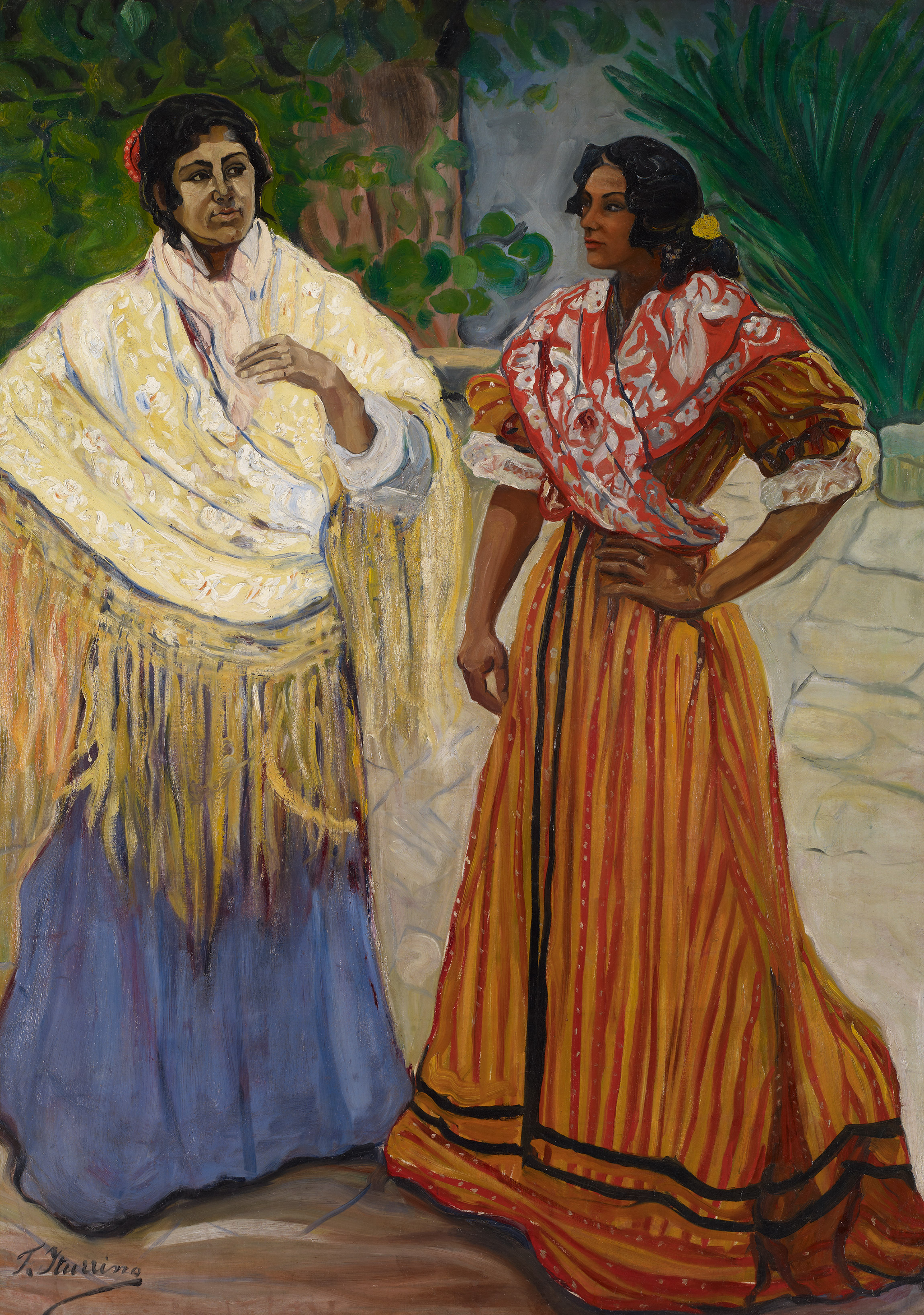
Francisco Iturrino
Two Gypsies
c. 1901-1903-
Oil on canvas
180 x 129 cm
CTB.1996.51
-
© Colección Carmen Thyssen-Bornemisza en préstamo gratuito al Museo Carmen Thyssen Málaga
This painting, which illustrates a theme recurrent in all of Iturrino's work, belongs to the category of his depictions of the Andalusian world and dates from the time of his first contact with southern Spain. The scene shows two gypsy women in a garden, chatting as the painter captures them with his brushes. Standing out against a background divided into two planes and a compositional arrangement and colour range typical of Cézanne, the women are bathed in the radiance of the dazzling sun of an Andalusian sky, a radiance that explodes in the dense colour of their dresses. Through the colours – yellow, violet, orange and the black of their hair adorned by the red of a flower – Iturrino conveys his emotion and envelops the women in an aura that transcends reality.
The search for the South had been a leitmotif in European painting since the age of Romanticism. Time after time, Eastern themes – the East was the source of inspiration for the Romantic painters – were taken up again by artists from subsequent generations, from the Impressionists to Picasso. Thematic particularities apart, the influence of the encounter with the light and colour of the East on artists was decisive.
For Francisco Iturrino, the "East" began in Andalusia and represented a kind of private paradise in his search for the exotic. Like Zuloaga – with whom he coincided in Seville in 1902 – he was "tremendously captivated by its picturesque life, by its 'Bohemia' of a very different kind from that in Paris; a true Bohemia with gypsies, pilgrimages, guitars, bullfights and wild, fleeting love affairs". But, as Enrique Lafuente Ferrari pointed out: "Whereas Zuloaga adopts an attitude in his models that is less pure and more highly-charged with interpretive prejudices and transfers them, furthermore, to a dark palette burdened with echoes of museums and without the exaltation of colour, Iturrino gives himself up to the motif with a violent, very pure drive, disconnected from literature, fascinated by colour, with a powerful instinct, and expresses himself with a palette of dazzling clarity."
In Two Gypsies a parallel with Zuloaga in theme and compositional formulation can nevertheless be seen vis-à-vis the static images in their paintings. Iturrino, however, absorbs and reproduces the spectacle of the Andalusian world, capturing the vivacity of scenes and their bohemian, exotic side. He does not seek to depict the anecdotal of a scene but instead creates a coloured, light-filled space to enclose the magic of the instant.
Petra Joos